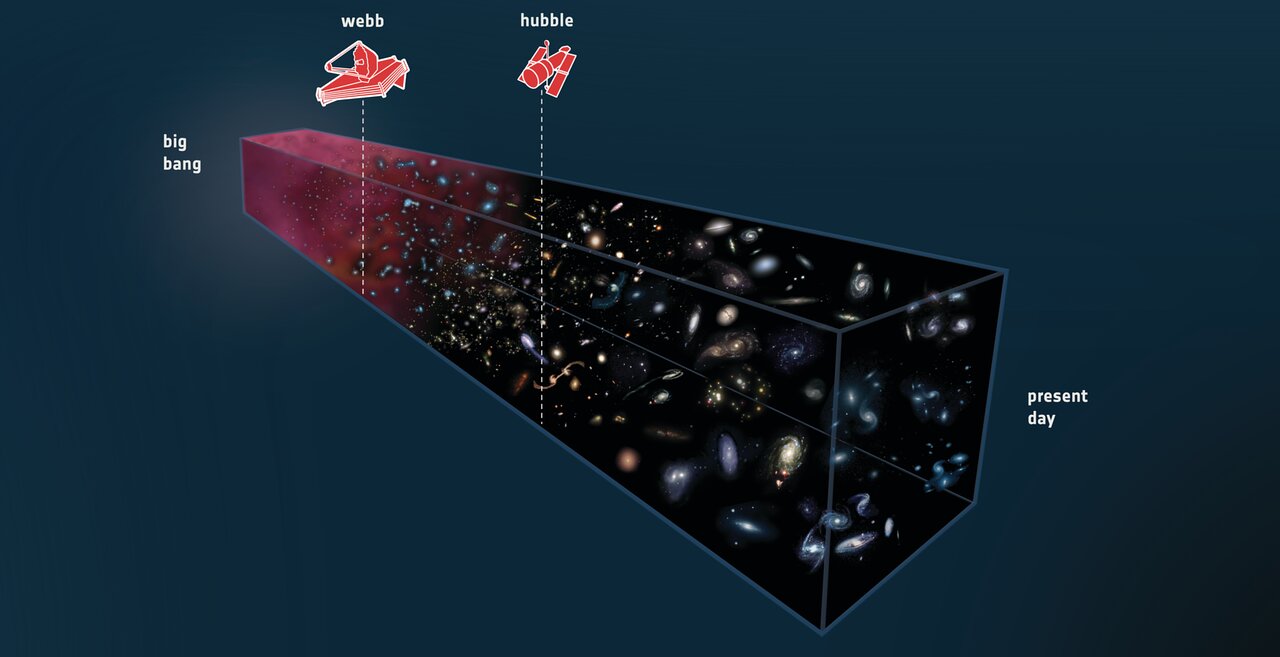The Early Universe
What did the early Universe look like? When did the first stars and galaxies emerge?
For the first time in human history we have the opportunity to directly observe the first stars and galaxies forming in the early Universe. When we observe something that is a million lightyears away, what we are seeing is actually how it looked a million years ago: we are looking back in time.
Webb’s infrared vision makes it a powerful time machine that will peer back over 13.5 billion years. Some of Hubble’s most remarkable images were its ‘deep fields’, which used long exposures – over days – to capture thousands of galaxies in single images. They revealed the most distant galaxies ever observed till then, and showed us young galaxies when they were only a few hundred million years old and were small, compact, and irregular. Webb’s infrared sensitivity will not only look back farther in time but will also reveal dramatically more information about stars and galaxies in the early Universe. Webb’s data will also answer the compelling questions of how black holes formed and grew early on, and what influence they had on the formation and evolution of the early Universe.

Webb will explore the early Universe and how galaxies evolved over time. Operating as a powerful time machine that will peer back over 13.5 billion years, Webb will be pushing beyond Hubble’s limits to look back even farther and observe the first stars and galaxies forming.

